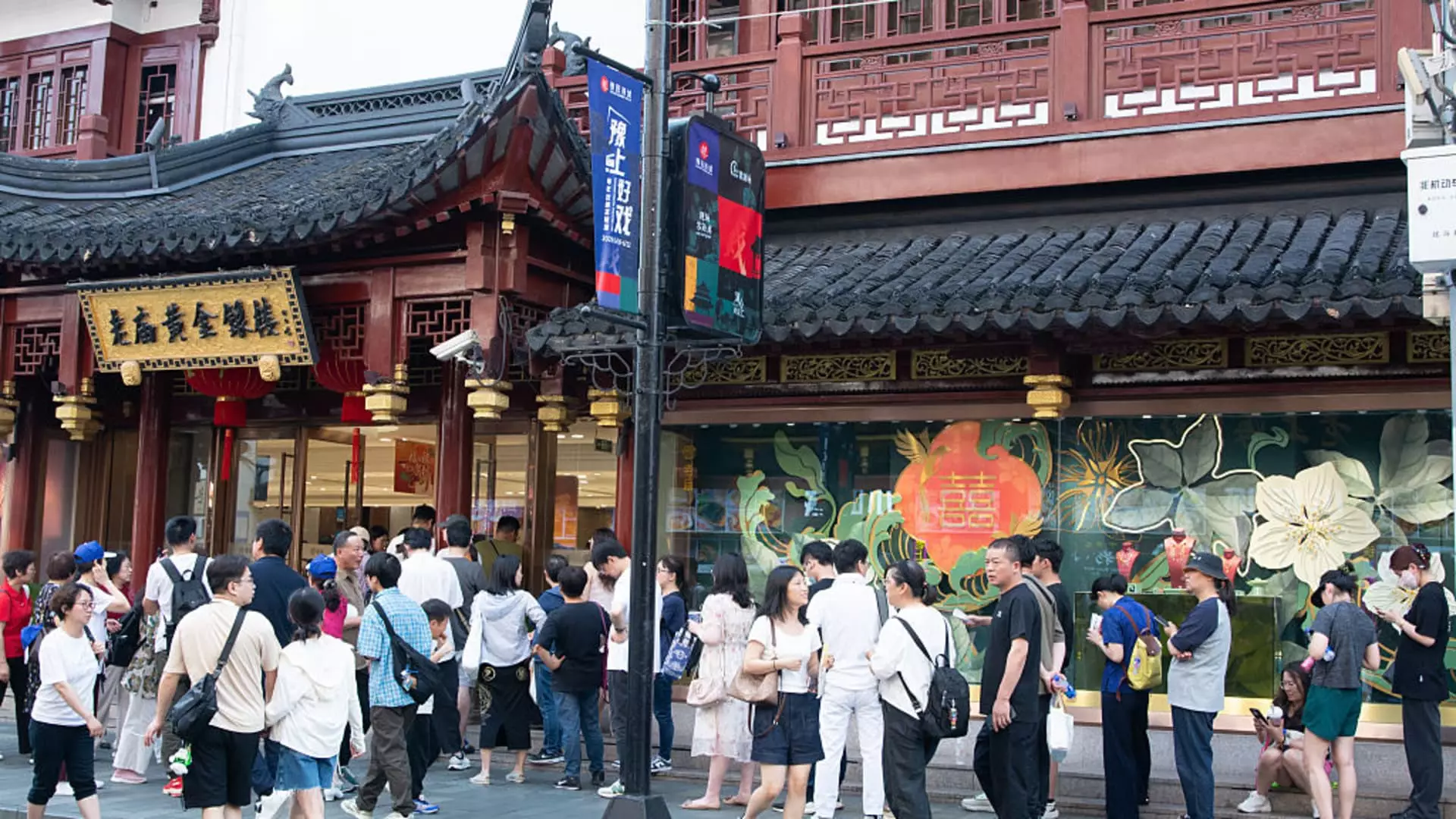In an unexpected surge, China’s retail sales in May exhibited a remarkable growth of 6.4% year-on-year, the fastest increase since late 2023. This promising statistic, released by the National Bureau of Statistics (NBS), significantly outperformed analysts’ predictions of a mere 5% growth. However, the context of this retail revival reveals a landscape rife with challenges. Consumers feel the weight of an economy wrestling with the dual burdens of deflation and property market instability. This growth, while encouraging, is tinged with uncertainty; it prompts deeper scrutiny of whether it can be sustained without further substantive policy interventions.
The increase in retail sales comes alongside government initiatives, such as a consumer goods trade-in program and a burgeoning surge in online shopping bolstered by events like the “618” e-commerce festival. Moreover, the addition of new countries to the visa-free entry list for foreign tourists hinted at a broader strategy to stimulate internal consumption. Despite these encouraging developments, the pessimistic tone from Linghui Fu, the NBS spokesperson, indicates that China’s economic environment remains precarious, with trade uncertainties looming over its recovery.
Deflationary Pressures and Economic Uncertainties
China’s struggle against persistent deflation should not be overlooked amidst the retail growth announcement. The continual decline in consumer prices—slumping 0.1% in May—reflects a broader issue: sluggish domestic demand. Such deflationary pressure reflects severely on consumer sentiments and spending capabilities. The NBS’s report also cites a decline in industrial output, which slowed to 5.8%, undershooting expectations, further highlighting potential economic fragility.
The property market’s deepening crisis, symbolized by a 10.7% contraction in real estate investments, compounds these concerns. As property prices tumble, consumers’ confidence in making significant purchases dwindles. Zhiwei Zhang, president and chief economist at Pinpoint asset management, articulates this fear succinctly when he cautions that falling property values could dampen the newfound momentum in retail spending. Consumers facing declining wealth are unlikely to splurge; instead, they will inevitably opt for frugality in uncertain times.
External Trade Dynamics and the U.S.-China Relationship
Despite the dismal export figures—showing a staggering 34% drop in shipments to the U.S.—there remains a glimmer of resilience within China’s external trade, particularly with Southeast Asia and Europe. The recent tariff truce reached between Beijing and Washington offers temporary reprieve and the hope that trade relations could stabilize. Yet, this gives rise to a troubling notion. Can the Chinese economy genuinely thrive when seemingly resilient even as it grapples with substantial decline in one of its most crucial trading relationships?
The global economic landscape becomes a chessboard of strategic maneuvering where China needs to explore alternative markets. However, reliance on shifting trade patterns may distract from addressing domestic concerns. Analysts posit that unless Beijing can adapt to new global standings while simultaneously spurring meaningful domestic recovery, this balance could prove tenuous.
The Role of Consumer Confidence
While retail sales figures may present an appealing narrative of recovery, it’s critical to analyze the underlying factors that shape consumer behavior. The temporary nature of the government-sponsored consumer stimulus, coupled with a traditional seasonality in spending, suggests that without ongoing support, the growth momentum may not be sustainable. There’s a legitimate concern that the recent growth could easily evaporate as fiscal support wanes, leading to a “triple whammy” effect where tighter dining restrictions, the natural end to consumption events, and subsidy cessation create a perfect storm against recovery.
The potential benefits of moving goods through the trade-in program could swiftly be rendered irrelevant if the public remains skeptical about their economic future. Consumers are not just swayed by incentives; they are deeply responsive to the sentiment of stability and optimism, both of which hang by delicate threads in the face of lagging employment rates and ongoing deflation.
The Path Forward: A Delicate Balance
Moving forward, it’s crucial for Chinese policymakers to maintain a holistic approach to economic recovery. This entails crafting measures that actively address deflation, reinvigorate consumer confidence, and foster sustainable growth across all sectors. As it stands, the government appears caught in a balancing act—propping up consumption while navigating the precarious waters of global trade relationships that face undeniable strains.
The message is clear: short-lived retail recoveries do not a robust economy make. For the long-term viability of China’s economic strategy, there needs to be a significant shift that prioritizes both consumer sentiment and structural reform. Allowing for a seamless and sustained growth trajectory will require ingenious policy formulations that extend beyond temporary measures and into the realms of transformative economic resilience.

